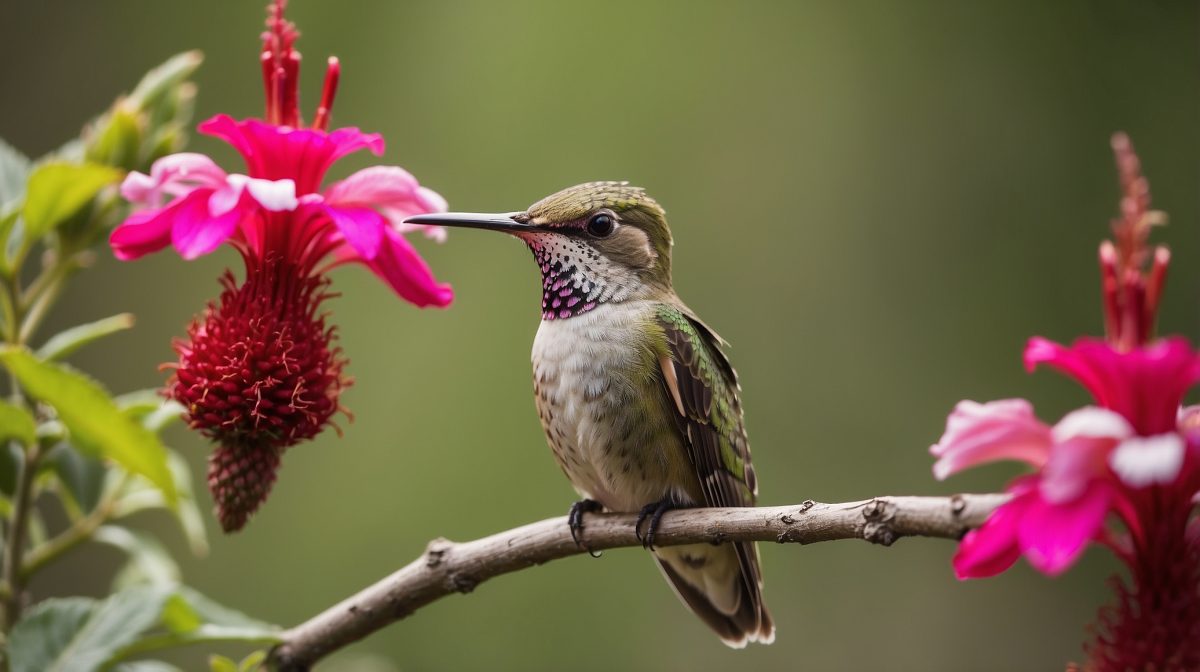As any good Texan knows, timing is everything, especially when it comes to rolling out the red carpet for our winged visitors. Whether you’re a seasoned birdwatcher or new to the game, understanding when to put out hummingbird feeders in Texas Hill Country is key to giving these birds a hearty welcome. So, grab yourself a glass of sweet tea, and let’s talk about the best time to invite hummingbirds to your yard.
Understanding Hummingbird Migration Patterns
Now, let’s get down to brass tacks and talk about the hummingbird species that grace our Texas Hill Country skies. We’re talkin’ about the Ruby-throated Hummingbird, the Black-chinned Hummingbird, and a few other guests that might just pass through on their way to other parts. These little fellas and gals are migratory, which means they’ve got a schedule to keep, flying south in the winter and returning to us as the weather warms up.
Their migration patterns are like clockwork, but they’re also at the mercy of Mother Nature. Our local weather patterns, from late cold fronts to early springs, can sway the timing of their arrival. It’s a delicate dance between the seasons and these winged wonders, and as stewards of the land, we’ve got to pay close attention to give them the welcome they deserve.
The Best Time to Hang Hummingbird Feeders
Based on years of watchin’ and waitin’, the historical migration data tells us that the ideal time to hang those hummingbird feeders is around the end of March to the first week of April. But now, don’t set your watch by it just yet—nature has a way of keeping us on our toes. You’ll want to keep an eye out for the signs: the blooming of wildflowers, the buzz of insects, and the chatter of other migratory birds. These are all tell-tale signs that our hummingbird friends are near.
And for those early birds or the stragglers lagging behind, it’s wise to be prepared. Having your feeders up a bit before the main crowd arrives ensures that the early visitors have a place to refuel, and keeping them out a tad longer in the season gives the laggards a fighting chance before continuing their journey.
Choosing the Right Hummingbird Feeder
When it comes to feeders, not all are created equal, and choosing the right one can make a world of difference. Glass feeders have a certain charm and are easy to clean, while plastic ones are durable and lightweight. And color? Well, red’s the ticket to catching a hummingbird’s eye. But remember, it’s not just about looks; it’s about safety and accessibility for these tiny travelers.
Where you place that feeder is just as important as the feeder itself. You want it in a spot that’s easy for the hummingbirds to see and safe from any rambunctious critters or windy weather. A clean feeder is a happy feeder, so regular maintenance is key to keeping your hummingbird visitors healthy and coming back for more of that sweet, sweet nectar.
Creating a Hummingbird Haven in Your Backyard
If you’re looking to roll out the red carpet for hummingbirds, then adding some native plants to your backyard is a surefire way to do it. Think about plants like Turk’s cap, trumpet vine, and salvia—these are like the BBQ of the plant world for hummingbirds. But don’t stop there; consider adding a water feature for them to splash around in or some shelter to protect them from the elements and predators.
Creating a safe environment is crucial. Those little jewels are mighty quick, but they’ve still got predators to watch out for. Keep feeders away from places where sneaky critters can lurk, and give the hummingbirds clear visibility so they can dine in peace. With the right setup, your backyard will be the go-to spot for all the local hummingbirds.
The Role of the JL Bar Ranch Resort in Hummingbird Conservation
Now, if there’s a place that’s got a soft spot for hummingbirds, it’s the JL Bar Ranch Resort. This fine establishment doesn’t just offer a luxury stay; it’s a sanctuary for our feathered friends. The folks at JL Bar Ranch have gone to great lengths to support hummingbird populations, ensuring their habitat is as pristine as the day the good Lord made it.
And let me tell you, the benefits are as clear as a Hill Country stream. Not only do the hummingbirds thrive in this environment, but guests at the resort get to witness the beauty of these creatures up close. From the buzz of wings at sunrise to the iridescent flash of feathers, the ranch offers a hummingbird experience that’s as authentic as Texas itself.
Conclusion
So, when should you put out hummingbird feeders in Texas Hill Country? Remember, late March to early April is your sweet spot, but stay flexible and keep your eyes on Mother Nature’s cues. And don’t forget, engaging in hummingbird conservation is more than just a hobby; it’s a way to connect with the land and the creatures that call it home.
Whether you’re perched on your porch or strolling through the grounds of JL Bar Ranch Resort, the joy of hummingbird watching is a treasure. So, here’s to the hummingbirds of Texas Hill Country—may your feeders be full, and your gardens be bustling with the flutter of tiny wings.
FAQs
What’s the earliest I might see hummingbirds in Texas Hill Country?
Keep your eyes peeled around late March, but it’s Texas, y’all—weather can be as unpredictable as a bull in a china shop.
Can I leave my hummingbird feeders out year-round?
While you could, it’s best to take ’em down once your regular visitors have headed south for the winter.
How often should I change the nectar in my hummingbird feeders?
Change it at least once a week, but in the Texas heat, every two to three days is better to keep it fresh and inviting.
What can I do to prevent ants and bees from taking over my hummingbird feeder?
Ant moats and bee guards are your best friends, and keep that nectar level just right—too high and the insects will be having a field day.
Are there any hummingbird-friendly events or activities at JL Bar Ranch Resort?
Indeed there are! The resort offers guided nature walks and talks on local wildlife, including our beloved hummingbirds.


